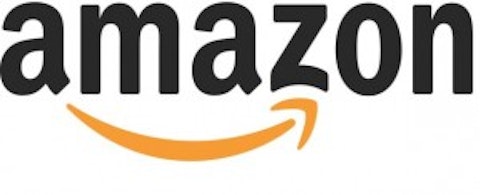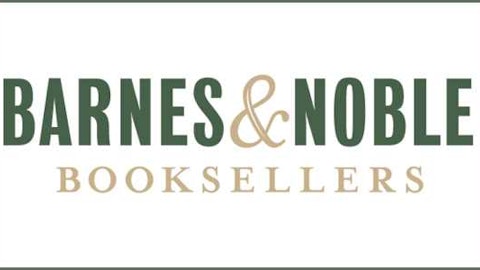
It is part and parcel of Bezos’ aim to be the world’s most consumer-centric company, not shareholder-centric, although shareholders certainly have nothing to complain about, not with a 25% gain this last year. Nor its astounding 400% plus return since it debuted to its all time high of $286.58 on July 2. Since 2009 alone, it’s been a five-bagger.
I love to read a story about a business that makes it seem human, not all charts and ratios, and gives you a fundamental reason to want to buy its stock. With Amazon.com, Inc. (NASDAQ:AMZN), you certainly need a reason besides its valuation, giving the literary and dramatic term “willing suspension of disbelief” new meaning. Amazon.com, Inc. (NASDAQ:AMZN) has a forward P/E in the 80s and a price/book of 15.33. As the chart shows, the stock has soared despite negative EPS and revenue growth trends.
Nonetheless, its e-commerce division is strong with each holiday season boasting better numbers. The prices of devices, the Kindle e-readers and Fire tablets, have been slashed dramatically in light of increased production and despite a summer lull, they should pick up briskly as the holidays approach.
Amazon.com, Inc. (NASDAQ:AMZN) is also the pioneer of cloud storage, e-books, and now its Prime streaming membership is featuring original content, vying with Netflix, Inc. (NASDAQ:NFLX) and Yahoo! Inc. (NASDAQ:YHOO).
AMZN EPS Diluted Quarterly YoY Growth data by YCharts
The empty suits
I like to think Bezos’ empty chair business model is the antithesis of empty suit CEOs and executives who ignore industry trends, not understanding why their earnings are lagging or their stock is cratering, which is what’s been happening at Amazon.com, Inc. (NASDAQ:AMZN)’s competitors Barnes & Noble, Inc. (NYSE:BKS) and Best Buy Co., Inc. (NYSE:BBY).
Best Buy Co., Inc. (NYSE:BBY) got a free pass when Circuit City closed its bricks and mortar stores. When “showrooming” first became a phenomenon, the company either ignored it or made customers feel uncomfortable about it.
In March, the company announced a major initiative to price match qualifying products at selected major retailers and e-tailers for a full 15 days after purchase. While this may seem like a big deal, the price matching policy was for a period of 30 days before the big reveal.
Showrooming has been an issue for years and this latest mandate will not, as the company claims, “Kill showrooming for good.” However, Best Buy’s online sales numbers have improved 16%. New CEO Hubert Joly has gained Wall Street’s confidence that he can turn things around from its last five quarters of dismal earnings and Q1’s decrease of 1.3% in comparable store sales. Joly still has a big job of regaining customer confidence in hopes of stemming the decelerating revenue growth plaguing the company before his tenure.
Customer satisfaction has long been a problem at Best Buy Co., Inc. (NYSE:BBY) with results in the low to mid 70’s on the American Customer Satisfaction Index, a monthly measure of what else… customer satisfaction. Amazon.com, Inc. (NASDAQ:AMZN), meanwhile, has achieved scores in the high 80’s, among the highest in the index along with Nordstrom, Inc. (NYSE:JWN), for years. To be fair, Amazon has lost a few points in the last two years while Best Buy has managed to improve, reaching its best score in years at 78. Barnes & Noble, Inc. (NYSE:BKS) achieved an 82.
Although the forward P/E is 12.48 and it offers a yield of 2.30% Best Buy is a company in transition. The consumer electronics e-tailer and retailer has cut off its European operations now only to do business in the US, Canada, and China.
BBY Revenue Quarterly YoY Growth data by YCharts
Gone with the wind
Barnes & Noble, Inc. (NYSE:BKS) didn’t start selling books online until 1996, at least a year after Amazon.com, Inc. (NASDAQ:AMZN) started, and its Nook was introduced long after the Kindle. It got a free pass when competitor Borders went out of business and another life preserver from Microsoft and Pearson until they gave it up and called it a day for the Nook tablet (they will still sell the basic b/w e-reader and a partner will make the Nook Color reader).
Unfortunately, for Barnes & Noble, Inc. (NYSE:BKS), it has been a day late and $2.31 short (its latest quarterly net loss per share). No wonder the short interest stands at 17.60%.
Reports have circulated, mainly from The New York Times, that Barnes & Noble, Inc. (NYSE:BKS) is selling more high margin tchotchkes (gift items), becoming a Hallmark/Starbucks mash-up as the relevance of its 675 bookstores diminishes day by day.
Its last best hopes are a metamorphosis into a literary gift shop and its 686 college bookstores with high margin textbooks. (Now, there’s a racket that’s profitable!).
Although the stock has managed to rise 12% this last year, it is as speculative as any biotech now and in danger of being remaindered (selling on the cheap). As Belle Watling said in Gone With The Wind, “It don’t pleasure me none to say it,” because every bookstore that closes breaks my heart a little, but the stores may go the way of Borders if the chart below is any indication.
BKS Gross Profit Margin Quarterly data by YCharts
Is Amazon still a best buy?
As a July 4 article in The New York Times explained Amazon’s dominant position in book sales, “It is an achievement built on superior customer service (my italics), a vast range of titles and, most of all, rock-bottom prices that no physical store could hope to match.”
The same argument goes for the rest of its e-commerce empire. Best Buy and Barnes & Noble, Inc. (NYSE:BKS) will remain challenged at best. I think Amazon.com, Inc. (NASDAQ:AMZN)’s excellent customer service and its commitment to offer the best prices to its customers will help it finally grow margins and profits.
As long as an empty chair remains at Amazon meetings, you can continue to invest in Amazon.
The article The Value of the Empty Chair Versus the Empty Suit originally appeared on Fool.com and is written by AnnaLisa Kraft.
AnnaLisa Kraft has no position in any stocks mentioned. The Motley Fool recommends Amazon.com. The Motley Fool owns shares of Amazon.com. AnnaLisa is a member of The Motley Fool Blog Network — entries represent the personal opinion of the blogger and are not formally edited.
Copyright © 1995 – 2013 The Motley Fool, LLC. All rights reserved. The Motley Fool has a disclosure policy.




